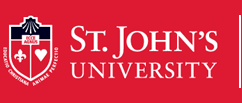Date of Award
2022
Document Type
Dissertation
Degree Name
Pharmaceutical Sciences (Ph.D.)
Department
Pharmaceutical Sciences
First Advisor
Aaron Dr. Muth
Second Advisor
Vijaya Dr. Korlipara
Third Advisor
Sabesan Dr. Yoganathan
Abstract
Gankyrin was first identified as an oncoprotein in hepatocellular carcinoma but was later found to be overexpressed in multiple cancer types. Gankyrin’s oncogenic ability is primarily manifested through its interactions with tumor suppressor proteins, regulation of transcription factors, and ability to moderate various signaling pathways. Additionally, gankyrin has been shown to decrease tumor suppressor protein levels (e.g., Rb and p53) in liver cancer cells. Cjoc42 was the first small molecule inhibitor of gakyrin; however, it also demonstrated poor anti-proliferative activity against liver cancer cells. Molecular modeling studies of cjoc42 with gankyrin suggests cjoc42 adopts a U-shape conformation upon binding to gankyrin, which may be contribute for its activity. To assess the importance of this U-shape conformation on anti-proliferative activity and gankyrin binding ability, the propyl linker of the cjovc42 scaffold was replaced with various cyclic and acyclic linkers. These derivatives helped in understanding the impact of cjoc42 conformational flexibility and rigidity on the anti-proliferative activity and gankyrin binding in liver and breast cancer cells. Conformationally constrained derivatives then significantly improved the anti-proliferative activity against HuH6 and MDA-MB-231 cells while also showing an ability to effectively bind gankyrin, disrupt the proteasomal degradation pathway, and cause cell cycle arrest.
Recommended Citation
Chavan, Tejashri, "STRUCTURAL MODIFICATION OF THE PROPYL LINKER OF CJOC42 FOR ENHANCED GANKYRIN BINDING AND ANTI-CANCER ACTIVITY" (2022). Theses and Dissertations. 563.
https://scholar.stjohns.edu/theses_dissertations/563
